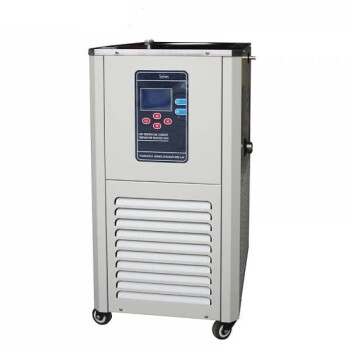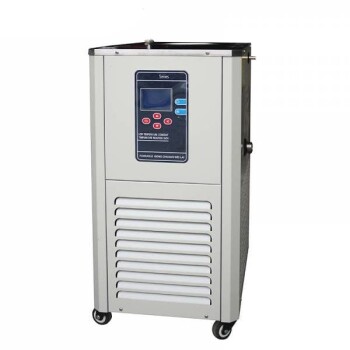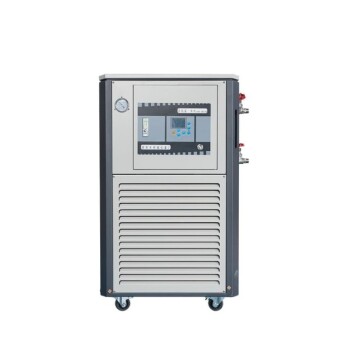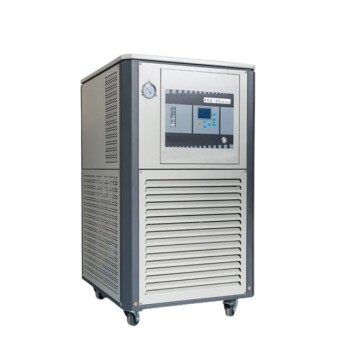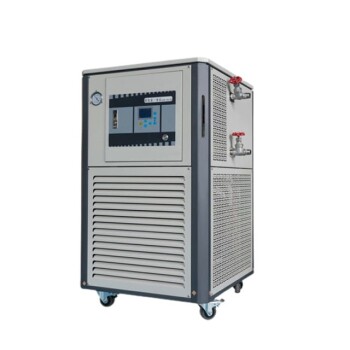A cooling circulator is a laboratory equipment used to cool samples, reagents, or cell media. It is commonly used in life science research, material testing, and wet chemistry. The equipment features a fluid reservoir connected to a cooling system, which is regulated by a digital or analog controller. The cooling circulator may have an open or enclosed water bath, and some may include a pump to deliver water to external equipment. Cooling circulators are designed to provide consistent and precise temperature control, with temperature ranges generally between -95°C to +200°C and pump flows of up to 26 L per minute.
Toggle Categories
Get Instant Support
Choose your preferred way to connect with our team
-
Get Free Quote Fill out form for detailed pricing
-
Send Email Detailed inquiry support
-
WhatsApp Quick mobile chat
Response Time
Within 8 hours on working days, 24 hours on holidays
cooling circulator
Our extensive portfolio of thermostatically controlled low-temperature baths and circulators offers a cost-effective system with a choice of four thermostatic controllers and five refrigeration units. Each unit is suitable for either open- or closed-loop circulation, providing ease of operation and low maintenance. Our laboratory circulators provide consistent and precise temperature control, ensuring accurate results for your experiments. With a wide temperature range of -95 °C to 200 C° and pump flows of up to 26 L per minute, we have the perfect Cooling Circulator for your specific application.
Applications of Cooling Circulator
- Cooling circulators are commonly used in laboratory applications such as spectrometry, viscometry, refractometry, and electrophoresis.
- They are also used for dissolution testing, which requires precise temperature control of fluids.
- Cooling circulators are suitable for both open and closed-loop circulation, making them versatile for a variety of applications.
- They can be used in conjunction with a separate liquid bath or water jacket, or as an open or closed-loop for external applications.
- Cooling circulators are ideal for surrounding items with a consistent flow of treated water or medium, which helps to avoid hot or cold spots.
- They are especially useful for applications that require a wide temperature range, which can be as low as -95 °C to as high as 200 °C.
- The flow rate and water pressure of a cooling circulator are important considerations, especially when covering long distances.
- They are also ideal for high-viscosity liquids and constant flow needs, making them suitable for a wide range of laboratory experiments.
Advantages of Cooling Circulator
- Precise temperature control: The cooling circulator provides precise temperature control, which is essential for many experiments and applications that require a specific temperature range.
- Wide temperature range: Cooling circulators have a wide temperature range that makes them suitable for a variety of applications, from routine tasks to spectrometry, viscometry, refractometry, and electrophoresis.
- Energy-efficient: Recirculating chiller systems use less energy, which reduces the impact on the HVAC system and saves on energy costs.
- Environmentally friendly: Cooling circulators promote a greener organization by reducing the burden on building systems and overall energy usage, resulting in an environmentally friendly workspace.
- Low maintenance: Finding products manufactured with proven components and technologies results in high reliability and low maintenance for chillers, which saves time and money in the long run.
Our Cooling Circulator provides precise temperature control for experiments involving liquid baths and is perfect for routine applications as well as spectrometry, viscometry, refractometry, and electrophoresis. With a temperature range of -95°C to 200°C and pump flows of up to 26 L per minute, it offers a cost-effective solution to meet your specific application requirements. Our Cooling Circulator is very advantageous in terms of price and offers a complete customisation service to cater to your unique needs.
FAQ
What Is A Cooling Circulator?
What Is A Circulating Water Bath?
How Does A Cooling Circulator Work?
What Are The Advantages Of Using A Cooling Circulator?
What Safety Precautions Should Be Taken When Using A Cooling Circulator?
REQUEST A QUOTE
Our professional team will reply to you within one business day. Please feel free to contact us!
Related Articles

How to Choose and Optimize Water Circulating Vacuum Pumps for Your Lab
Learn how to choose and optimize water circulating vacuum pumps for lab applications, balancing efficiency and reliability.

How Laboratory Freeze Dryers Outperform Alternatives in Pharma, Food, Biotech & Research
Discover how lab freeze dryers outperform traditional methods in pharma, food, biotech & research—preserving potency, nutrients & integrity.

How Cascade Refrigeration Powers Ultra-Low Temperature Freezers Beyond Single-Stage Limits
Learn how cascade refrigeration enables ultra-low temperature freezers to reach -80°C and beyond, overcoming single-stage system limitations for critical sample storage.

Why Ultra-Low Temps are Non-Negotiable: The Science Behind Preserving Critical Biological Materials
Discover why ultra-low temperature freezers (-86°C) are vital for preserving cells, proteins, and vaccines. Learn the science behind ULT storage best practices.

Upright vs. Chest ULT Freezers: How to Choose the Right Configuration for Your Lab
Compare upright vs. chest ULT freezers for your lab: temperature stability, workflow efficiency, and cost analysis to protect sensitive samples.

How ULT Freezers Prevent Catastrophic Loss of Microbiological Samples
ULT freezers safeguard microbiological samples with advanced temperature control, contamination prevention, and emergency backup systems to prevent catastrophic loss.

Understanding Cold Traps in Lyophilizers: Key Factors and Evaluation Methods
Explores the role, evaluation, and common misconceptions of cold traps in lyophilizers, emphasizing the importance of water capture efficiency.

Understanding the Functionality of Cryogenic Cold Traps
An in-depth look at how cryogenic cold traps operate and their applications in various fields.

Applications of Dry Cold Traps in Various Processes
Dry cold traps are used in multiple applications to condense and collect gases, protecting equipment and improving process efficiency.

Optimal Cold Trap Temperature in Freeze Drying: Balancing Efficiency and Performance
Exploring the impact of cold trap temperature on freeze-drying efficiency and equipment performance.

Distinguishing Between Condensers and Coolers in Refrigeration Systems
Explores the key differences between condensers and coolers in chiller refrigeration systems, focusing on phase change, heat transfer coefficients, and series heat exchangers.

Cold Trap Design and Water Vapor Transport in Lyophilization
An overview of cold trap design and its impact on water vapor transport and product quality in the lyophilization process.

Advantages of Laboratory Circulating Water Vacuum Pumps
Explores the benefits of using laboratory circulating water vacuum pumps over traditional methods.

Choosing the Right Heating Method in Laboratory Experiments
Understanding the differences between metal bath, water bath, and thermostat heating methods for various lab experiments.

Laboratory Water Bath Instructions for Use
Guidelines for operating and maintaining laboratory water baths for safe and effective use.

Comprehensive Guide to Thermostatic Water Baths
Detailed overview of thermostatic water baths, including usage, precautions, common issues, maintenance, and calibration.

Features and Precautions of Laboratory Water Bath Equipment
An overview of the features and safety precautions for laboratory water bath equipment.

Preparation and Finishing Work for Using a Low-Temperature Thermostatic Reaction Bath
Guidelines on preparatory and finishing tasks for using a low-temperature thermostatic reaction bath.

Guide to Using and Maintaining Constant Temperature Water Baths
Detailed instructions on using and maintaining constant temperature water baths for optimal performance in laboratory settings.

Laboratory Heating Equipment Safety
Discusses the importance of safety in using electrothermal thermostatic water baths and constant temperature oil baths in laboratories.

